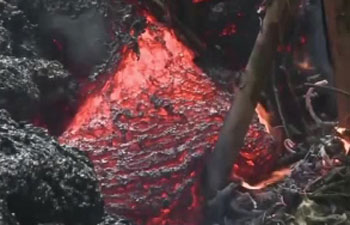WASHINGTON, May 17 (Xinhua) -- Canadian engineers took a substantial step towards enabling manufacturers to create plastics out of sunshine and pollution and addressed a key challenge associated with carbon capture.
They used a thin copper-based catalyst and an experimental strategy to transform captured carbon dioxide to ethylene, according to a study published on Thursday in the journal Science.
Fossil fuels offers raw materials from which plastics are made and also produces climate-warming carbon dioxide. The precursors for plastics is responsible for 1.4 percent of global carbon emissions, according to the International Energy Agency estimates.
Now, researchers led by University of Toronto Professor Ted Sargent is turning this process upside down: using renewable electricity to transform the carbon into ethylene, a precursor of many plastics.
While carbon-capture technology filters and extracts carbon dioxide from flue gases, the substance currently has little economic value that can offset the cost of capturing it.
Transforming this carbon into a commercially valuable product like ethylene is expected to increase the incentives for companies to invest in carbon capture technology.
They used a copper-based catalyst to improve both the energy efficiency and selectivity of the conversion.
Also, they ensure the catalyst's stability in high acid conditions that are ideal for catalyzing carbon dioxide to ethylene.
The engineers overcame this stability challenge by altering their experimental setup. They deposited their catalyst on a porous support layer made of Teflon and sandwiched their catalyst with carbon on the other side.
This new setup protects the support and catalyst from degrading, and enables it to last 15 times longer than previous catalysts.
Currently, their system is capable of performing the conversion on a laboratory scale, producing several grams of ethylene at a time.
The team's long-term goal is to scale the technology up to the point where they are able to convert the large amount of chemicals needed for commercial application.













